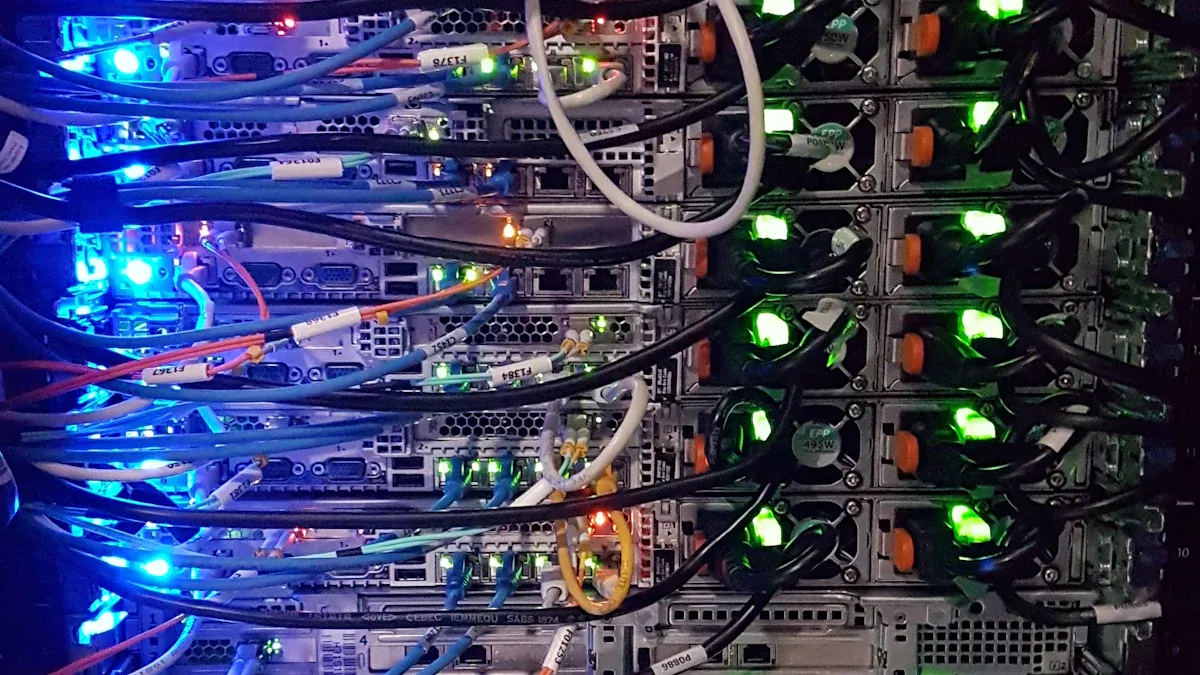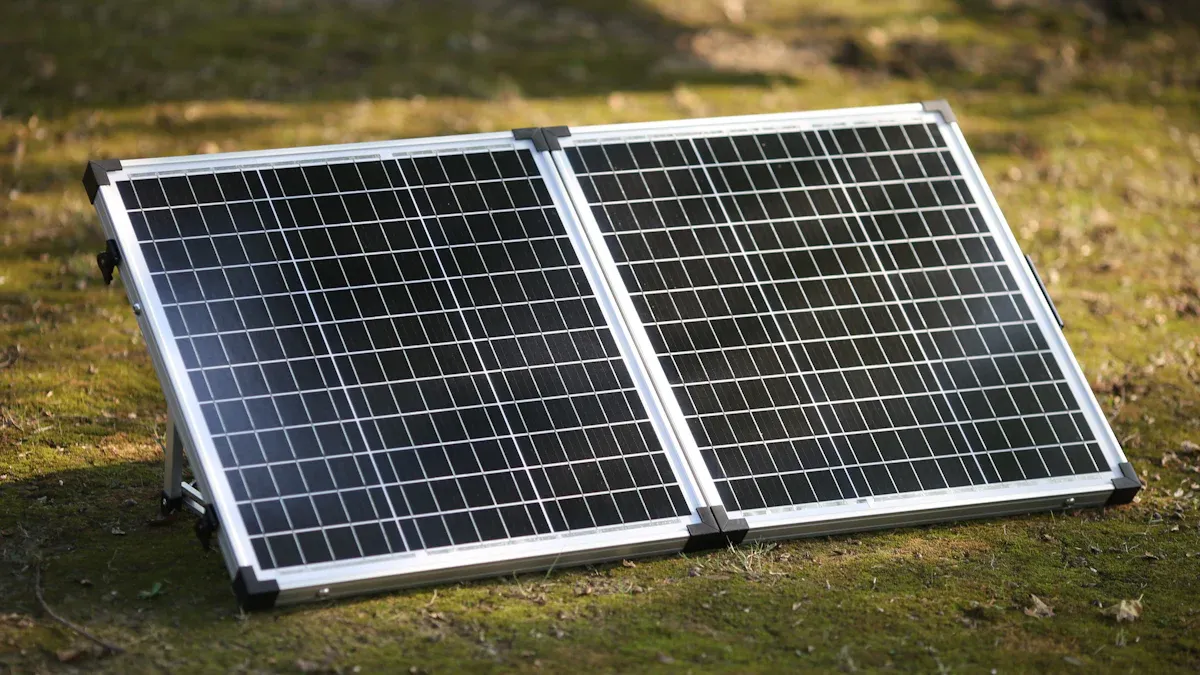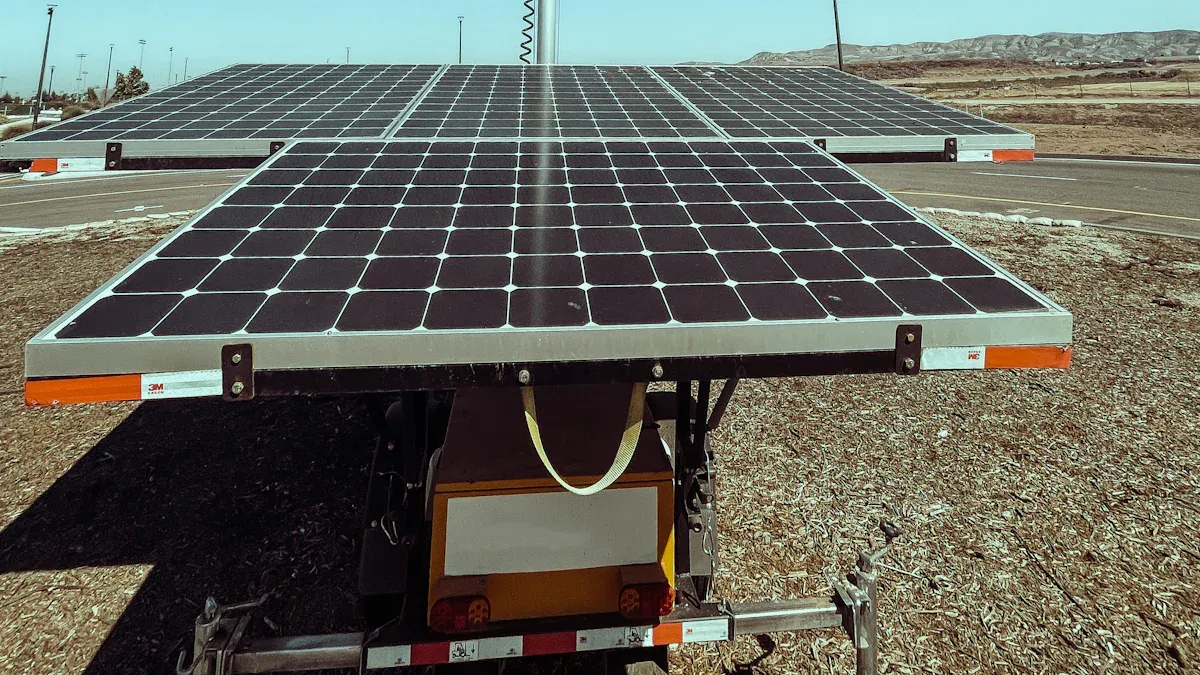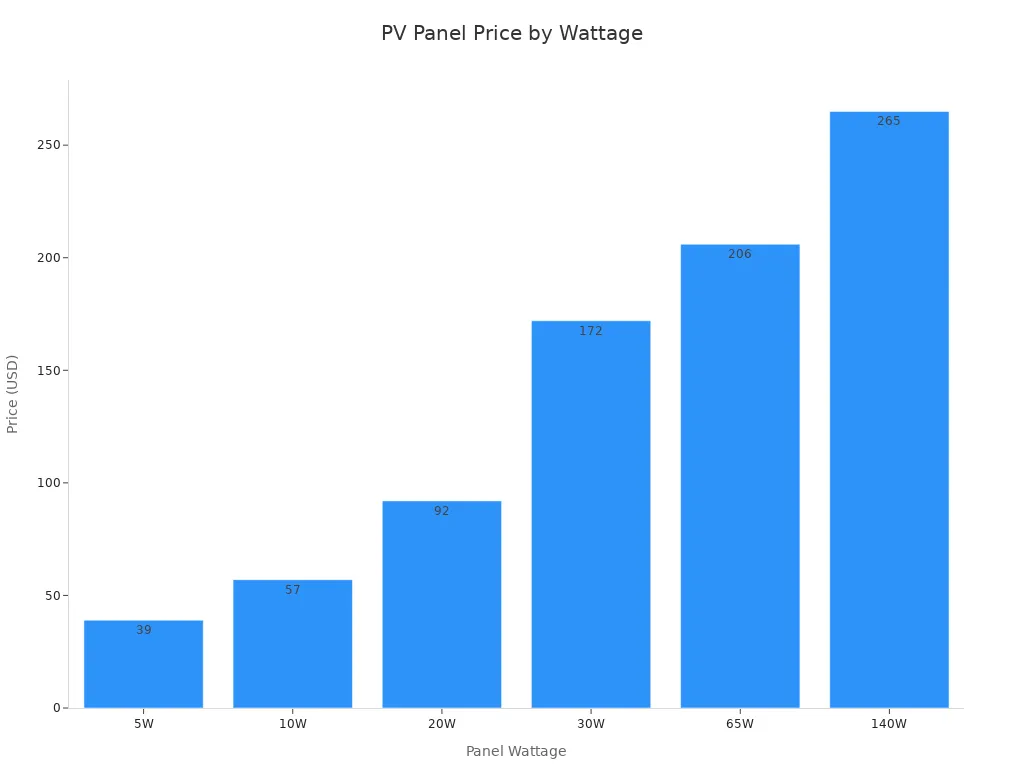How to Compare Leading PV Panels for Telecom Cabinets in 2025

Selecting the right PV panel for telecom cabinet installations in 2025 requires careful evaluation of efficiency, durability, and suitability for outdoor conditions. Many telecom operators face challenges with outdoor telecom cabinet deployments, especially regarding reliability and long-term costs. The table below highlights expert insights on how to choose the best solution and how to choose the right cabinet for demanding environments:
Aspect | Expert Insight |
|---|---|
Scalability and Network Growth | Solar systems can easily scale for expanding networks, including remote outdoor sites. |
Reliability and Maintenance | PV panels offer long lifespans and minimal maintenance, ensuring stable power for outdoor telecom cabinet applications. |
Key Takeaways
Choose high-efficiency monocrystalline panels to maximize power in limited cabinet space and ensure long-lasting performance.
Select durable panels with corrosion resistance and strong frames to withstand harsh outdoor weather and reduce maintenance needs.
Match panel size and mounting options carefully to fit modular or fixed telecom cabinets and allow proper airflow for cooling.
Verify certifications and warranties to ensure safety, reliability, and long-term support for your PV panel investment.
Consider top brands like Maxeon and Qcells for their proven efficiency, durability, and specialized features for outdoor telecom use.
Comparison Criteria
Efficiency
Efficiency remains a top priority when selecting PV panels for telecom cabinets. High-efficiency panels generate more power from limited space, which is crucial for compact cabinet installations. Operators often choose monocrystalline panels for their superior efficiency, especially in locations with restricted mounting areas. Efficient panels also reduce the need for active cooling by minimizing excess heat generation, which supports better thermal management inside the cabinet.
Durability
Durability determines the long-term reliability of PV panels in harsh outdoor environments. Common issues include corrosion of steel supports, heat and UV exposure, wind and storm damage, and snow or ice loads.
Corrosion accelerates in humid or coastal areas, causing rapid degradation if materials lack proper coatings.
Heat and UV rays degrade protective layers, increasing the risk of damage.
High winds and storms can dislodge panels without robust anchoring.
Snow and ice add heavy loads, stressing the structure.
Tip: Operators should use corrosion-resistant steel, apply UV-resistant coatings, and schedule regular inspections. Smart monitoring systems help detect early structural issues, while anti-snow coatings and snow load management strategies protect in cold climates.
Size and Fit
Panel size must match the available space on or near the telecom cabinet. Oversized panels complicate installation and may require custom mounting solutions. Compact, high-output panels offer the best fit for modular and fixed cabinets. Proper sizing also reduces the need for active cooling by preventing overcrowding and allowing airflow.
Temperature Tolerance
PV panels in telecom cabinets face wide temperature swings. Panels with high temperature tolerance maintain performance during heatwaves or cold snaps. Active cooling systems can help manage internal temperatures, but selecting panels with proven resilience reduces reliance on these systems. Effective thermal management ensures stable operation and extends equipment lifespan.
Certifications
Certifications such as IEC 61215 and IEC 61730 confirm that panels meet international safety and performance standards. Certified panels withstand environmental stress and ensure compliance with industry regulations. Operators should verify certifications before purchase to avoid unexpected maintenance or replacement costs.
Cost
Cost influences every purchasing decision. Operators must consider not only the upfront price but also installation, maintenance, and potential active cooling expenses. High-quality panels may cost more initially but often reduce long-term costs by minimizing repairs and downtime. Evaluating the total cost of ownership helps operators make informed choices that balance budget and reliability.
Warranty
A strong warranty protects against manufacturing defects and early failures. Leading brands offer warranties of 25 years or more, covering both performance and materials. Extended warranties reduce risk and lower the total cost of ownership by ensuring support throughout the panel’s service life.
PV Panel for Telecom Cabinet Selection

Power Output
Telecom operators demand reliable power for both modular and fixed telecom cabinets. In 2025, manufacturers have pushed the boundaries of PV panel output, with many models now exceeding 750 watts. High power density panels allow operators to maximize energy generation within the limited footprint available on modular and fixed cabinets. This trend supports the deployment of high-performance equipment, which often requires stable and abundant power. Operators can reduce the number of panels needed by selecting high-output models, which simplifies installation and maintenance for both modular and fixed telecom cabinets. When choosing a pv panel for telecom cabinet applications, power output remains a critical factor, especially for sites with high energy consumption or limited mounting space.
Panel Type
Panel type directly impacts efficiency, durability, and suitability for modular and fixed telecom cabinets. The three main types—monocrystalline, polycrystalline, and thin-film—offer distinct advantages and limitations. The table below summarizes their key characteristics:
Feature | Monocrystalline Panels | Polycrystalline Panels | Thin-Film Panels |
|---|---|---|---|
Efficiency | High (17% - 22%) | Medium (15% - 17%) | Low (6% - 13%, ~11% typical) |
Power Capacity | Highest (≥300 watts, up to 320 watts) | Mid-tier (240 - 300 watts) | Lowest (varies, generally less wattage) |
Material Composition | Single pure silicon crystal | Multiple silicon crystal fragments | Various semiconductors (CdTe, a-Si, CIGS) |
Lifespan | Long (>25 years) | Shorter than mono | Shortest, degrades faster |
Heat Tolerance | Better heat resistance | Lower heat tolerance | Not specified, generally less tolerant |
Physical Characteristics | Rigid, black color, space-efficient | Rigid, blue color with marbled pattern | Thin, flexible, lightweight, easy to install |
Installation Factors | Suitable for limited space and demanding environments | Affordable, less efficient, budget option | Flexible form factor, lightweight, less labor-intensive |
Monocrystalline panels dominate the 2025 market for pv panel for telecom cabinet installations. Their high efficiency and compact size make them ideal for modular and fixed deployments where space is at a premium. Polycrystalline panels offer a cost-effective alternative for fixed telecom cabinets with less stringent efficiency requirements. Thin-film panels provide flexibility and ease of installation, but their lower efficiency and shorter lifespan limit their use in most modular and fixed telecom cabinets. Operators should match panel type to the specific needs of modular or fixed telecom cabinets, considering space, budget, and expected environmental conditions.
Note: Monocrystalline panels remain the preferred choice for modular telecom cabinets due to their superior performance in limited spaces and harsh outdoor environments.
Brand Overview
The 2025 market features several leading brands that deliver reliable solutions for both modular and fixed telecom cabinets. First Solar, LONGi, Maxeon, Qcells, Canadian Solar, and REC have established reputations for quality and innovation. These brands offer panels with high power density, advanced temperature tolerance, and robust warranties. Operators often select these brands for modular and fixed telecom cabinets because they provide consistent performance and support. Each brand tailors its product lines to meet the unique demands of modular and fixed deployments, ensuring compatibility with a wide range of cabinet designs.
First Solar specializes in high-efficiency panels suitable for fixed telecom cabinets in challenging climates.
LONGi and Maxeon lead in monocrystalline technology, offering compact panels ideal for modular and fixed installations.
Qcells and Canadian Solar provide versatile options that balance cost and performance for both modular and fixed telecom cabinets.
REC focuses on durability and long-term reliability, making its panels a strong choice for fixed telecom cabinets exposed to harsh weather.
Operators should evaluate each brand’s product specifications, warranty terms, and support services before selecting a pv panel for telecom cabinet projects. The right brand choice ensures optimal performance and longevity for both modular and fixed telecom cabinets.
Outdoor Telecom Cabinet Needs

Outdoor Performance
Outdoor telecom cabinets require PV panels that deliver consistent power despite changing weather. Operators must select panels that maintain efficiency during high temperatures, heavy rain, or snow. Outdoor conditions often cause rapid temperature swings. Panels with strong active cooling features help prevent overheating and support reliable network performance. High humidity and condensation can damage electrical components, so sealed panel designs offer better for harsh weather conditions.
Wind and airborne debris present additional challenges. Panels must withstand strong gusts and resist impact from flying objects. Corrosion-resistant materials extend the lifespan of PV panels exposed to outdoor environments. Operators often choose panels with robust frames and protective coatings. These features provide pros for outdoor use, such as reduced maintenance and longer service intervals. However, some panels may have cons for outdoor use, including higher upfront costs or the need for specialized mounting systems.
Note: Active cooling systems and advanced thermal management strategies help maintain optimal panel performance in extreme weather.
Environmental Factors
Outdoor telecom cabinets face a range of environmental factors that influence PV panel selection:
Ambient temperature changes can cause heat stress. Panels must maintain efficiency during both hot and cold periods.
Solar exposure increases thermal load. Operators should consider panels with high heat tolerance and, if needed, shading or insulation.
Humidity and condensation risk moisture buildup. Moisture-resistant or sealed panel designs protect sensitive components.
Airborne contaminants such as dust, salt, and chemical vapors can corrode panels. Protective coatings or enclosed designs help prevent degradation, especially in coastal or industrial areas.
Exposure to water from rain, snow, or cleaning processes demands sealed and corrosion-resistant panels to ensure durability.
Operators who address these environmental factors can extend the service life of PV panels in outdoor telecom cabinets. Active cooling and regular inspections further reduce the risk of weather-related failures.
Modular vs. Fixed Telecom Cabinets
Main Difference Between Modular and Fixed
Telecom operators often face the choice between modular vs. fixed telecom cabinets. The main difference between modular and fixed designs centers on flexibility and scalability. Modular cabinets use a building-block approach. Operators can add or remove sections as network needs change. Fixed cabinets, on the other hand, have a permanent structure. They do not allow for easy expansion or reconfiguration.
Key differences in design impact installation and maintenance. Modular cabinets arrive in sections. Technicians assemble them on-site, which speeds up deployment. Fixed cabinets ship as a single unit. This design can simplify transport but limits adaptability. Modular vs. fixed telecom cabinets also differ in how they handle upgrades. Modular cabinets support quick technology updates. Fixed cabinets require more effort for changes.
Note: Modular preferred for fast-growing networks. Fixed preferred for stable, long-term installations.
PV Panel Fit Considerations
PV panel selection depends on the unique requirements of modular vs. fixed telecom cabinets. Modular cabinets often have limited roof space. Operators must choose compact, high-efficiency panels. These panels maximize power output without overcrowding the cabinet. Fixed cabinets usually offer more surface area. This allows for larger or multiple panels, which can increase total energy production.
When comparing modular vs. fixed telecom cabinets, panel mounting options also differ. Modular cabinets may need custom brackets or rails to fit panels securely. Fixed cabinets often use standard mounting systems. Environmental exposure varies as well. Modular cabinets sometimes move between sites, so panels must withstand frequent handling. Fixed telecom cabinets stay in one place, so operators can focus on long-term durability.
The table below summarizes key differences:
Feature | Modular Cabinets | Fixed Cabinets |
|---|---|---|
Flexibility | High | Low |
Expansion | Easy | Difficult |
Panel Mounting | Custom solutions | Standard solutions |
Surface Area | Limited | Ample |
Frequent handling | Long-term exposure |
Operators should weigh these key differences before choosing PV panels. Modular vs. fixed telecom cabinets each present unique challenges and opportunities for solar integration. Careful planning ensures reliable power and efficient use of space.
Comparison Table
Key Specs
Selecting the right pv panel for telecom cabinet installations requires a clear understanding of technical specifications. The table below compares leading models from top brands in 2025. It highlights efficiency, power output, size, and warranty—four factors that directly impact performance and long-term value.
Brand | Model | Efficiency (%) | Power Output (W) | Size (mm) | Warranty (Years) |
|---|---|---|---|---|---|
First Solar | Series 7 | 21.5 | 750 | 2278 x 1134 x 35 | 30 |
LONGi | Hi-MO 7 | 22.0 | 780 | 2384 x 1096 x 35 | 25 |
Maxeon | Maxeon 7 | 22.8 | 800 | 2094 x 1046 x 40 | 40 |
Qcells | Q.TRON BLK | 21.6 | 770 | 2278 x 1134 x 35 | 25 |
Canadian Solar | HiHero 7 | 22.5 | 790 | 2384 x 1134 x 35 | 30 |
REC | Alpha Pure-RX | 22.3 | 770 | 2063 x 1029 x 30 | 25 |
Note: All models listed above meet international safety and performance certifications, ensuring suitability for outdoor telecom cabinet applications.
Notable Differences
Operators notice several key differences when comparing these panels for telecom cabinet use. Maxeon offers the highest efficiency and the longest warranty, which appeals to those seeking maximum reliability. LONGi and Canadian Solar provide high power output with competitive warranties, making them strong choices for sites with higher energy demands. REC and Qcells focus on compact size, which fits well on smaller cabinets or modular systems.
Cost remains a significant factor. Panels with higher efficiency and longer warranties often come with a higher upfront cost. However, these models can reduce maintenance and replacement expenses over time. Operators should weigh the initial cost against the expected lifespan and performance benefits. Choosing the right pv panel for telecom cabinet projects depends on balancing these specifications with site requirements and budget constraints.
Recommendations
Best Overall
Maxeon 7 stands out as the best overall choice for telecom cabinet solar applications in 2025. This panel delivers the highest efficiency at 22.8% and a power output of 800 watts. Its compact size fits both modular and fixed installations, making it a versatile solution for operators. The 40-year warranty provides unmatched peace of mind, reducing long-term risk and maintenance costs. Maxeon 7 supports network performance by maintaining stable energy output, even during periods of fluctuating demand. Operators who require reliable power for modular or fixed telecom cabinets benefit from its advanced active cooling features and robust thermal management. Real-world case studies show that Maxeon panels consistently outperform competitors in both modular and fixed deployments, especially in regions with challenging weather.
Operators seeking a balance of efficiency, durability, and long-term support should consider Maxeon 7 for both modular and fixed telecom cabinet projects.
Best for Outdoor
Selecting the best PV panel for outdoor telecom cabinet installations requires careful attention to several criteria. Operators must address the unique challenges of outdoor environments, including exposure to weather, temperature swings, and airborne contaminants. The following factors determine the best panel for outdoor use:
Material durability and corrosion resistance: Galvanized steel works well in moderate climates, while stainless steel suits extreme or coastal areas.
Structural compatibility: The mounting system must fit the panel, support its weight, and withstand outdoor forces.
Location and climate considerations: Panels must handle wind and snow loads specific to the site.
Proper alignment and tilt angle: Adjusting the tilt maximizes energy efficiency and reduces energy loss.
Compliance with local regulations: Operators must follow building codes and safety standards.
Professional installation and regular maintenance: Certified installers and routine inspections extend system lifespan.
Qcells Q.TRON BLK emerges as the top performer for outdoor telecom cabinet applications. This panel offers strong pros for outdoor use, such as a robust frame, high efficiency, and advanced active cooling. Its design resists corrosion and damage from harsh weather. Operators report fewer cons for outdoor use, with minimal maintenance and reliable performance in real-world case studies. Qcells panels also support modular and fixed deployments, adapting to different cabinet types and site conditions.
Regular maintenance and professional installation further enhance outdoor reliability, ensuring stable operation in all seasons.
Best Value
Operators often seek the best value when selecting PV panels for modular and fixed telecom cabinets. Cost-effective panels must balance price, performance, and warranty. The following table compares several popular options for telecom cabinet use:
Panel Wattage | Price (USD) | Key Features | Warranty |
|---|---|---|---|
5W | $39 | Multi-crystalline silicon cells, anodized aluminum frame, suitable for harsh climates | 10 years |
10W | $57 | High-performance multi-crystalline cells, rugged anodized aluminum frame | 10 years |
20W | $92 | High-yield multi-crystalline cells, rugged aluminum frame, optional mounting bracket | 10 years |
30W | $172 | Polycrystalline, unbreakable high-transmission glass, stainless steel frame | 10 years |
65W | $206 | Shatter-resistant multi-crystalline cells, anodized aluminum frame | 10 years |
140W | $265 | Industrial-grade, multi-crystalline cells, durable construction | 10 years |

Panels in this range deliver rugged construction and consistent performance in outdoor settings. Operators often choose the 65W and 140W models for modular and fixed telecom cabinets due to their industrial-grade build and reliable output. These panels withstand harsh weather and require minimal active cooling, reducing operational costs. The 10-year warranty adds further value, ensuring support for both modular and fixed deployments. Real-world case studies highlight their effectiveness in off-grid outdoor telecom cabinet projects, where cost and durability matter most.
Operators should weigh both pros for outdoor use, such as durability and low maintenance, and cons for outdoor use, like shorter warranties compared to premium models, when making a final decision.
Selecting the right PV panel for telecom cabinets involves several key steps. Operators should compare efficiency, durability, size, and warranty, then match panel features to cabinet type and environmental needs.
Proper matching protects sensitive equipment from dust, moisture, and temperature extremes, while ensuring compliance with safety standards and extending lifespan.
Operators can stay informed by leveraging intelligent monitoring systems, following industry groups, and tracking technology trends.
For those seeking how to choose the best solution, consulting suppliers or using a detailed checklist provides a practical next step.
FAQ
What makes monocrystalline panels the top choice for telecom cabinets in 2025?
Monocrystalline panels deliver the highest efficiency and power density. They fit limited spaces on telecom cabinets and withstand harsh outdoor conditions. Operators prefer them for their long lifespan and reliable performance.
How often should operators inspect PV panels on outdoor telecom cabinets?
Operators should schedule inspections at least twice a year. Regular checks help identify damage, dirt buildup, or loose connections. Early detection prevents power loss and extends panel life.
Do PV panels for telecom cabinets require special certifications?
Yes. Panels must meet international standards like IEC 61215 and IEC 61730. Certified panels ensure safety, durability, and compliance with industry regulations. Operators should always verify certifications before installation.
Can operators use the same PV panel models for both modular and fixed cabinets?
Many high-efficiency panels suit both modular and fixed cabinets. Operators should confirm panel size, mounting compatibility, and power requirements for each cabinet type before selection.
What is the typical warranty period for leading PV panels in 2025?
Most top brands offer warranties from 25 to 40 years. Longer warranties reduce risk and support long-term reliability for telecom cabinet installations.
See Also
The Importance Of Enhanced Telecom Cabinets In 2025
Solar Energy Storage Solutions Designed For Telecom Cabinets
Latest Developments Shaping Outdoor Telecom Cabinet Technology
Integrated Solar Inverter And Battery Systems For Telecom Cabinets
CALL US DIRECTLY
86-13752765943
3A-8, SHUIWAN 1979 SQUARE (PHASE II), NO.111, TAIZI ROAD,SHUIWAN COMMUNITY, ZHAOSHANG STREET, NANSHAN DISTRICT, SHENZHEN, GUANGDONG, CHINA


